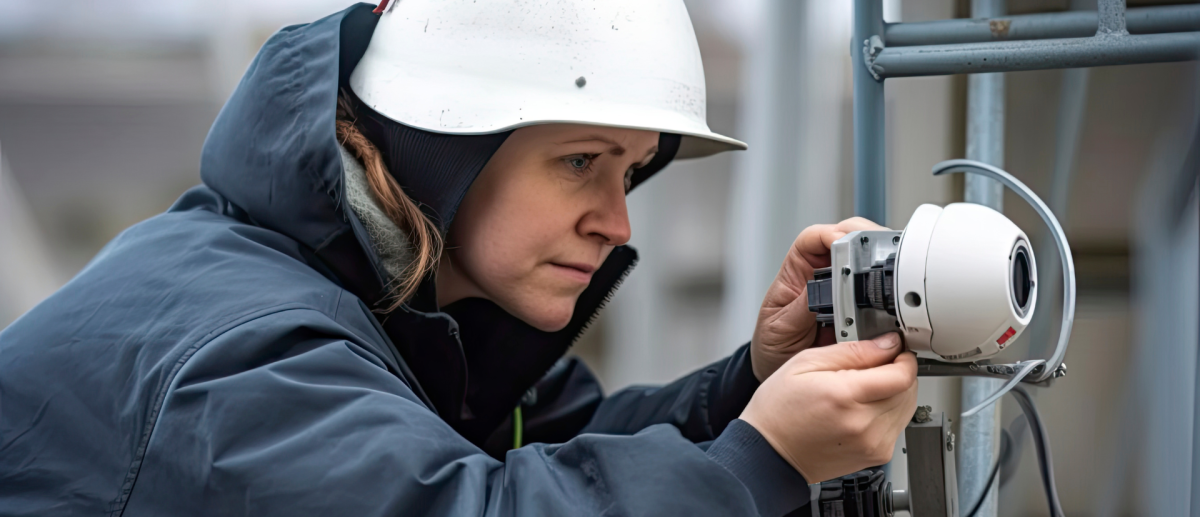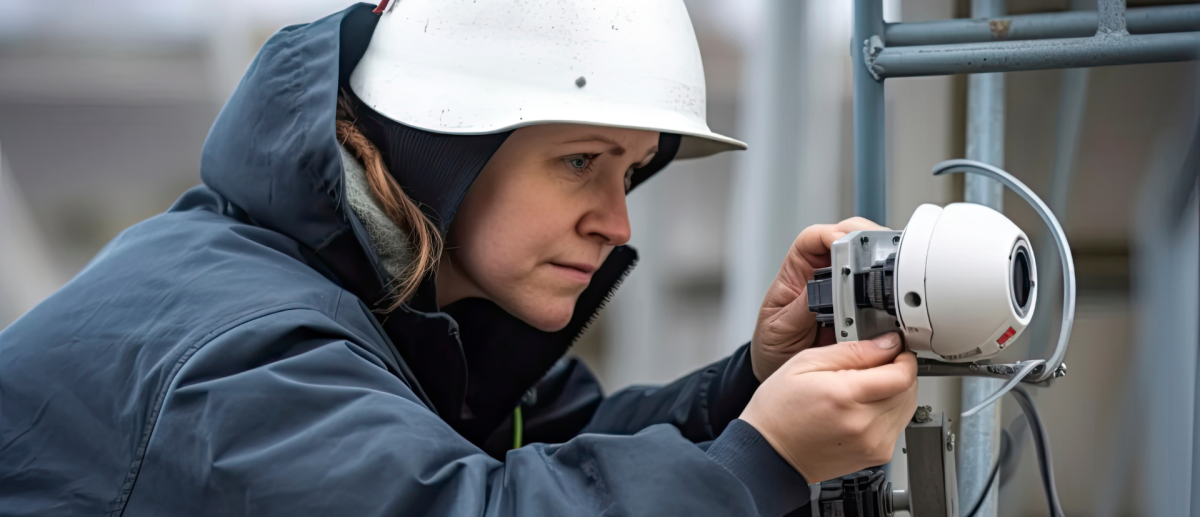By: Press Services
September 22, 2025
Long Island Businesses Go Smart: AI Security Cameras Lead the Way
Why Long Island Companies Are Upgrading to Cloud-Managed, AI Camera Systems
Whitestone, United States - September 22, 2025 / Streamline Telecom /

Long Island’s commercial districts—from Nassau corporate parks to Suffolk industrial corridors—are moving fast from legacy DVRs and coax to AI-driven, cloud-managed, mobile-ready video. Executives and facility managers are rethinking risk, compliance, and day-to-day oversight with systems that detect patterns, flag anomalies, and push alerts in real time. In this new playbook, Commercial Security Cameras are less about recording what happened and more about preventing losses, accelerating response, and simplifying operations.
Modern deployments don’t hinge on buying more devices; they pivot on getting better outcomes from each camera and each minute of footage. Clear evidence, faster incident resolution, simpler user management, and reliable retention are now table stakes. On a busy jobsite or in a multi-tenant building, that means fewer disruptions, stronger accountability, and a system that stands up when it matters most.
What Changed: From Grainy Footage to Actionable IntelligenceLegacy systems promised security but often delivered late insights. Today’s platforms turn video into operational intelligence:
Real-time detection and alerts: Analytics spot loitering at rear entrances, tailgating at secure doors, unusual motion after hours, line crossing along fence lines, or vehicles idling in loading zones—sending notifications to the right person on the right device.
Smart search at scale: Find “person with red jacket” near a warehouse roll-up door between 6–7 pm without scrubbing hours of video. Attribute and object search make investigations quick and targeted.
Cloud resilience and retention: Video persists beyond local device failure or theft. Encrypted storage tiers align to policy and insurance requirements, with audit trails for compliance.
Mobile workflows: Managers verify events, export clips, share incident links, or talk down through speakers—all from a phone. Remote oversight saves site visits and speeds decisions.
The result is less noise, more signal, and decisions based on facts, not guesswork.
Hardware That Fits Long Island EnvironmentsThe right mix of camera types ensures coverage, evidence quality, and uptime across retail, healthcare, logistics, hospitality, and office campuses throughout Long Island.
Box-Style CamerasBest for: Specialty focal lengths and deep corridor views.
Why they work: Interchangeable lenses offer tight framing where pixel density matters—like cash rooms or long, straight hallways.
Considerations: Utility form factor; great for back-of-house or outdoor housings where appearance is secondary.
Best for: Lobbies, hallways, elevators, parking structures, and exteriors that need a discreet profile.
Why they work: Vandal-resistant, wide coverage, and weather-rated options with clean aesthetics that blend into finished spaces.
Considerations: Specify proper IR distance and avoid reflective glass that can bounce light back into the lens.
Best for: Warehouses, yards, campuses, and plazas where one operator needs zoom-in control.
Why they work: Remote control, presets, and auto-tours deliver situational awareness for events, deliveries, or crowd movement.
Considerations: Pair with fixed domes for continuous coverage when the PTZ is aimed elsewhere.
Best for: Perimeter runs, access roads, and long exterior walls.
Why they work: Strong IR performance and visible deterrence, with straightforward aiming for choke points and approaches.
Considerations: Confirm weather ratings and mounts for coastal wind and salt exposure.
Best for: Mixed-light environments—storefronts with street glow, garages with variable lighting, and facilities that operate 24/7.
Why they work: Automatic IR shift maintains consistent evidence quality after dark.
Considerations: Validate nighttime performance in a live test before sign-off.
Best for: Long fence lines, rooftops, yards, and fog-prone areas where visible light struggles.
Why they work: Detects heat signatures in smoke, mist, or haze to trigger early alerts before a person is visible on standard video.
Considerations: Pair thermal with visible-light cameras for identification and evidentiary detail.
Practical tip: Most Long Island deployments blend domes for broad coverage, bullets for perimeters, PTZ for event control, and thermal at high-risk zones.
Design That Holds Up Under PressureA successful system balances coverage, evidence quality, and reliability—without over-engineering.
Coverage standards:
Entrances and exits: Position at face level with wide dynamic range (WDR) for backlit doors; capture both approach and exit angles.
Transaction and service counters: Tight pixel density to document hands, items, and faces.
Critical rooms: Focus on safes, pharmacy shelves, telecom closets, and IT racks.
Loading and parking: Plate capture at chokepoints; PTZ for sweep views paired with fixed cameras for continuity.
Elevators and lobbies: Overlapping fields of view for seamless tracking.
Reliability and uptime:
Dual-path recording: Edge storage on cameras plus cloud retention or redundant NVRs.
Network health: PoE budgeting, UPS-backed switches, VLAN segmentation, and documented labeling for smooth maintenance.
System monitoring: Automated alerts for camera offline, storage near capacity, or outdated firmware.
Access governance: Role-based permissions, SSO, MFA, and audit logs to track who viewed, exported, or shared footage.
The region’s business mix—from industrial parks in Hauppauge to medical campuses in Mineola—requires tools that save time and reduce risk across multiple sites.
Multi-site simplicity: One cloud dashboard monitors uptime, storage, health, and users across locations—no patchwork logins.
Faster investigations: Attribute search slashes the time to find evidence, improving outcomes and lowering labor costs.
Better incident handling: Mobile alerts and exports tighten the chain of custody while enabling quick decisions.
Insurance and compliance: Clear retention rules, encrypted storage, and audit trails align with carrier and legal expectations.
Team alignment: Facilities, HR, and security share the same view of events with permissioned access and standardized naming.
Video does more when it connects with the rest of the stack:
Access control: Trigger recording on badge reads, denied entries, or door-held events; detect tailgating in secure zones.
Intrusion detection: Video verification reduces false alarms and unnecessary dispatches.
POS and transaction systems: Overlay receipt data with camera views to investigate returns, discounts, or voids.
Facilities/BMS: Link alerts to mechanical rooms and rooftop assets for fast root-cause analysis.
The theme: one truth across systems, fewer silos, and cleaner audits.
Building a Business Case: From Cost Center to Risk ReductionLeaders aren’t buying cameras; they’re buying lower incident counts, quicker response, and stronger evidence.
Loss prevention: Deter theft, curb vendor disputes, and add accountability for deliveries and pickups.
Liability protection: Trusted documentation for slip-and-fall claims, property damage, and HR incidents.
Operational efficiency: Remote verification reduces truck rolls; clearer evidence reduces back-and-forth.
Resilience: Cloud backups and edge storage avoid catastrophic losses when devices fail or go missing.
Present the ROI with incident baselines, projected reductions, and process improvements—then align retention and analytics to those goals.
Long Island Deployment Realities (And How to Handle Them)Coastal weather: Choose weather-rated housings, corrosion-resistant hardware, and sealed conduit for bayside properties.
Mixed lighting: Prioritize WDR and proper IR distances; verify night shots before project close.
Active job sites: Temporary cameras during construction phases prevent blind spots due to scaffolding or changing layouts.
Bandwidth planning: H.265 or smarter codecs and event-based recording reduce network load without sacrificing detail.
Elevators and garages: Vandal-resistant domes, protected cabling, and plate capture at gates or ramps.
Campus layouts: Combine PTZ patrols with fixed coverage for continuity between buildings and parking areas.
The difference between a seamless rollout and a maintenance headache usually comes down to the integrator’s process.
What to look for:
Licensing and credentials: New York State Security License for security and access work; BICSI RCDD oversight for structured cabling quality.
Design discipline: Coverage maps, naming conventions, labeling, and camera “test shots” captured in the as-builts.
Service clarity: Response windows, escalation paths, and spare-parts planning for critical areas.
Fair pricing: Mid-market rates that support trained labor, quality materials, and reliable warranty support.
Clean workmanship: Organized racks, tidy patching, and clear documentation that any tech can follow.
These standards reduce rework, compress timelines, and keep stakeholders on the same page.
A Practical Camera-Type Playbook for Long Island SitesMain entrances: Dome with WDR and face-level positioning; intercom or talk-down where appropriate.
Perimeters and alleys: Bullet with strong IR; thermal for high-value fences or low-visibility zones.
Warehouses and yards: PTZ for sweep control plus fixed domes for continuous coverage.
Stock rooms and telecom closets: Box or dome with tight pixel density and secured mounts.
Garages and gates: Bullet + LPR positioning at approaches; confirm angle and distance for plate clarity.
Rooftops: Weather-rated housings, lightning protection, and secured conduit paths.
Site Walk & Risk Map – Identify assets, threats, travel paths, and lighting.
Design & Scope – Camera selection, mounting, analytics, retention, and network plan.
Quote & Timeline – Fair pricing, clear milestones, and realistic schedules.
Install & Commission – Labeled cabling, validated views, health monitoring, and admin setup.
Test & Handover – Acceptance checklist, documentation, and training for operators.
Support & Optimization – Defined response windows, proactive health checks, and periodic reviews.
This sequence reduces change orders and keeps projects on budget.
Local Confidence: Where Buyers Start Their SearchLong Island decision-makers often check a provider’s footprint, project history, and service responsiveness before engaging. Many will review cctv cameras for business listings to verify real-world presence and references in the NYC metro. Clear documentation, clean installations, and reliable schedules tend to carry more weight than brand labels alone.
Those comparisons lead back to fundamentals: consistent communication, adherence to timelines, and build quality that simplifies maintenance.
About Streamline TelecomStreamline Telecom is an NYC-area ICT contractor and integrator focused on security camera installation and maintenance, access control, structured cabling, wireless networks, and A/V systems. Leadership includes BICSI RCDD oversight and a New York State Security License for security and access work. The team is recognized for schedule discipline, straightforward pricing, and organized builds that are easy to support. Learn more about business video surveillance and how integrated designs connect cameras, access, and networks for stronger outcomes across Long Island facilities.


Contact Information:
Streamline Telecom
152-53 10th Ave
Whitestone, NY 11357
United States
Sean Nolan
https://www.streamlinetelecom.com/
This contant was orignally distributed by Press Services. Blockchain Registration, Verification & Enhancement provided by NewsRamp™. The source URL for this press release is Long Island Businesses Go Smart: AI Security Cameras Lead the Way.
